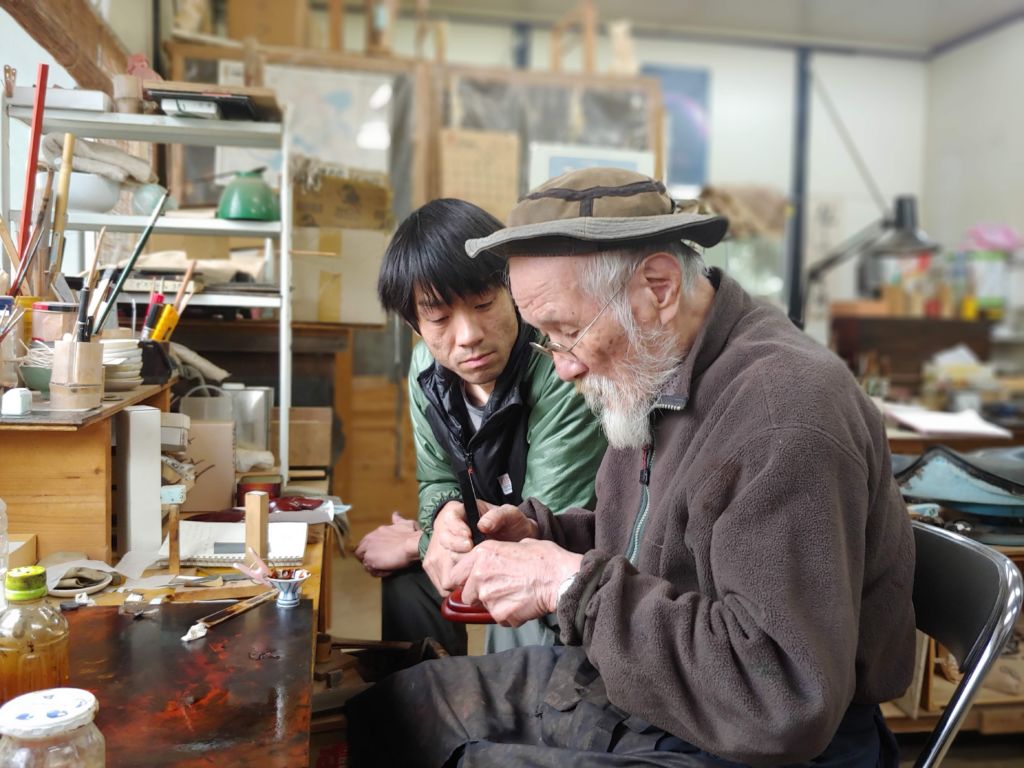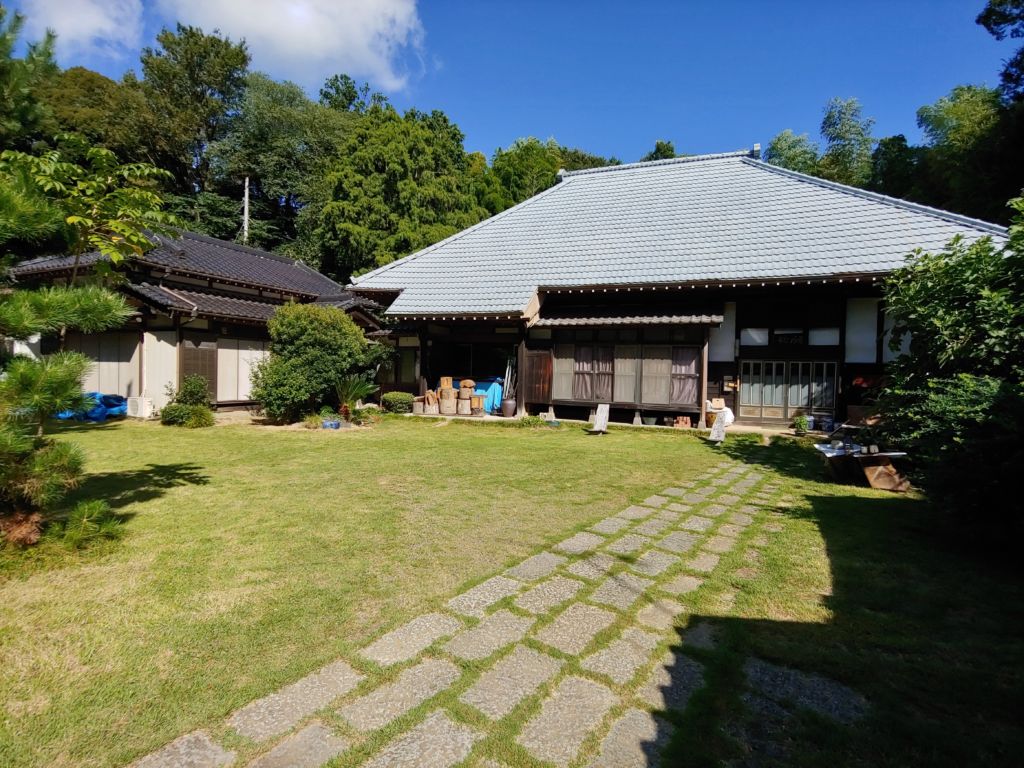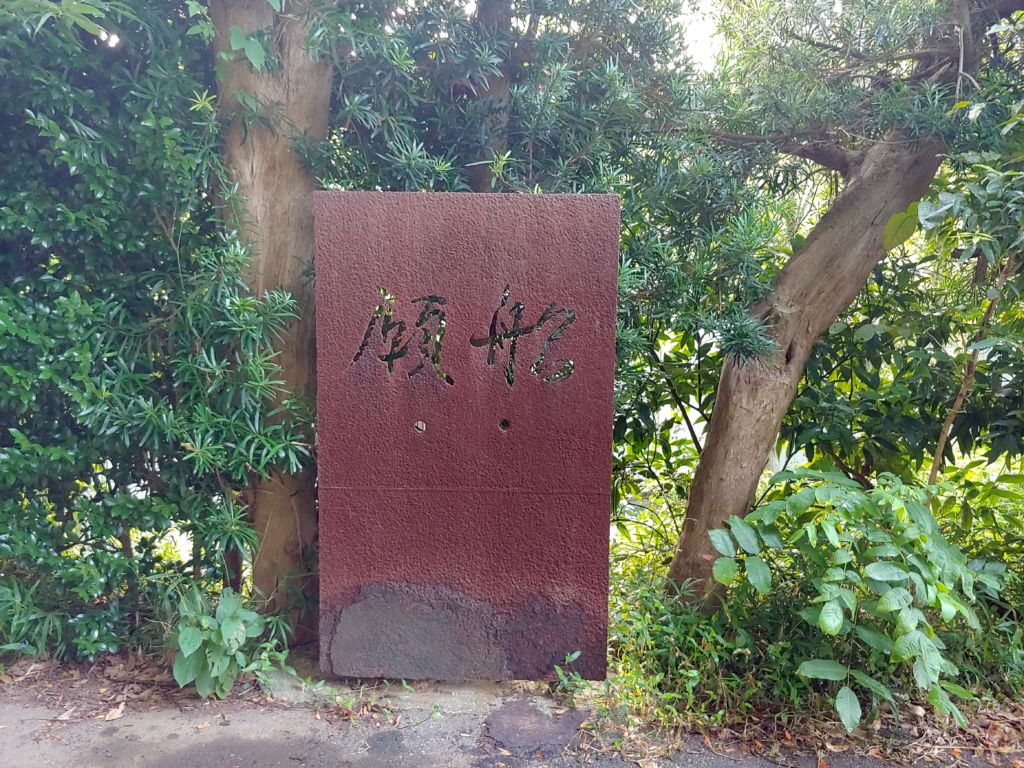More than a sensei. More than a studio.
„Artists and craftspeople alike often feel some sort of deep connection with the materials with which they create. There are certain materials that can inspire us to think about more than just ourselves. The way grain in a piece of wood flows in and out creating the most magnificent and unexpected patterns. The way ceramics can have those rich, beautiful colors from the intensity of fire dancing through a kiln. They provide both makers and their users with a lifetime of fascination and discovery.
I can’t remember when I first came across urushi. However, I will always remember how I felt when I held an urushi work for the first time. It was pure joy and fascination. Urushi is a “living” material. Always changing as you’re working with it and evolving throughout its life well after it has cured. There are few things that will endure us and yet can age with such grace. It is a material with a deep connection to this Earth and to Asian culture. It’s beautiful luster and clarity truly have no equal. Why? When? How? Urushi has inspired generations and many have wondered only to realize that a lifetime will never be enough to fully understand.
As I write this kneeled on tatami mats in an old Japanese house surrounded by the sound of bamboo trees swaying with the wind, I can’t help but wonder how we’ve come so far in realizing the magnificence of this wonderful material given to us by nature. It’s only natural that this is where my journey begins.
I’m currently just beyond a month into a three-month study trip training under Japanese urushi artist Nagatoshi Onishi at his Gansen Urushi Studio in Chiba. I’ve always believed that the universe has its way of guiding us along our paths, connecting us with people and experiences that will change our lives forever. Onishi sensei is one of those people and learning at Gansen has been one such experience.
For over 60 years Onishi sensei has made a life centered around urushi. He has traveled around the world to study the origins of urushi through different cultures. He founded the Urushi Culture Council, an organization with the goal of bringing the world together to push the future of urushi culture forward. He opened his Gansen Urushi Studio to artists everywhere with open arms. He is a master of his craft, but forever a student as well. I once asked him what the source of his motivation was to continue exploring urushi for as long as he has. He replied that he still doesn’t understand urushi and that there are still always more questions.
It would be amiss to think of Gansen as a school. In fact, there is no curriculum as sensei prefers it that way. Studying at Gansen is a constant, open conversation between student and sensei and about more than urushi. We discuss everything from nature, art, philosophy, the universe, family life, culture and more. It is not just about technique, but understanding ourselves and relating to everything around us. You have to be “always thinking,” he reminds me. His philosophy is that of “living art” which can only be born from the mind, the hands and the soul working together as one.
Sensei is certainly special and I feel our relationship is equally so. He is kind and as humble as he is wise. He only gives a simple instruction which at times feels sparse, but he demands my understanding. He reminds me to not only focus on my work but to observe what is happening around me. As he is always doing the same. He will often relate process to life and not for the sake of being metaphorical or clever, but because there is always a deeper understanding in every step. To be honest with you, it has taken me about a month to truly grasp the subtleties of his lessons. When I first arrived at the studio, I was presented with what seemed like a hundred of his pieces left over from the last 30 years. He encouraged me to hold them, telling me that urushi should feel soft and invite your touch. Even now, I’m still discovering how important those words were. Not just as they relate to finished work, but just as much throughout the process.
Gansen is a monastery. It is amazing how you can be in a country so densely populated yet you’re about two steps away from being completely isolated from the rest of the world. It’s refreshing, if not at times, even a little lonely. I’ve come to appreciate that what it has allowed me, however, is time to ponder, to meditate, to explore. To provide me with an opportunity to open my mind, my heart, and to consider my existence. In many ways, it’s freeing and allows me to just be.
Working alongside him every day I’ve come to realize that this experience is a glimpse into sensei’s life. Gansen is everything he is. I witness his moments of inspiration as well as his challenges. There are no secrets. He just goes about his day with his thoughts, his work and an open heart and perhaps the most valuable lesson I can learn from him is that is all there needs to be.“
– written by Hugh Hung




Hinterlasse einen Kommentar